- Pranayama during pregnancy
- Benefits
- Pregnancy breathing exercises
- Nadi Shodhan
- Ujjayi
- Bhramari
- Sitali
- Pranayamas to avoid
- FAQs
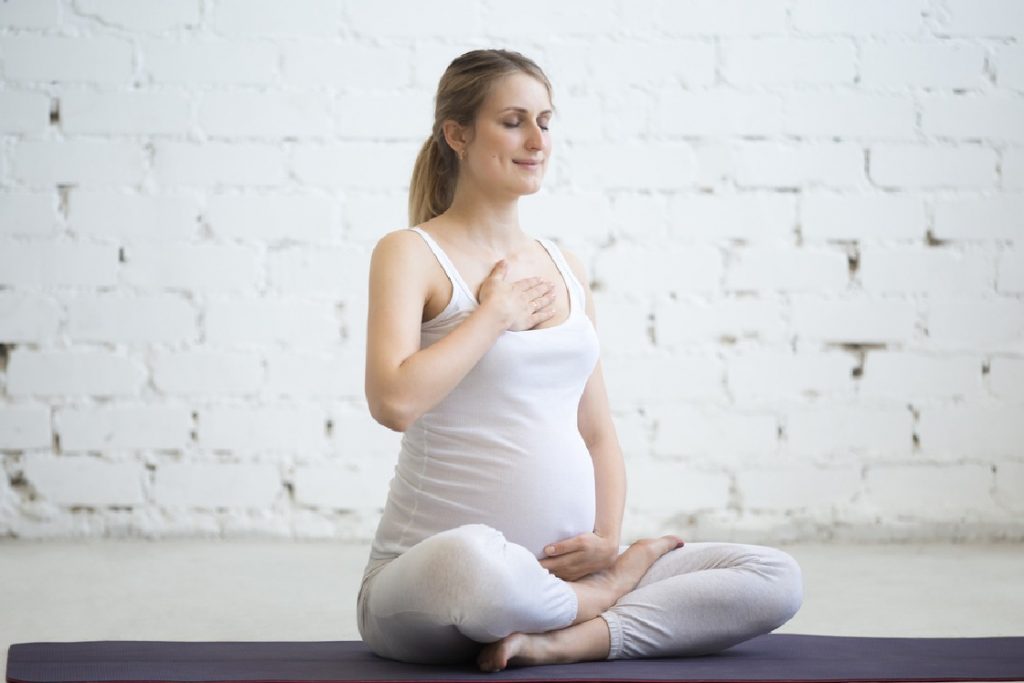
It is with no doubt that pregnancy is considered to be a wonderful phase in a woman’s life. It brings along the joy and happiness of bringing your child into the world. But the 9 months of pain, breathlessness, swelling, whacky diet, and loads of hormonal fluctuations.
Practising pranayama from the early stages of pregnancy can help during labor and childbirth as well.
In this article, we will discuss how pranayama can help you in your pregnancy, its benefits, and some effective pranayama you can practice during pregnancy.
How does pranayama help during pregnancy?
Seeking comfortable and deep breathing techniques during pregnancy can be difficult. A pregnant woman’s belly grows larger as her pregnancy progresses, taking up more room in her abdomen. Pregnant women may feel uncomfortable as a result of this.
The practice of Pranayama during pregnancy trains you to breathe the correct way. It encourages deep breathing, which encourages proper intake of oxygen and flushing out carbon dioxide. This in turn energizes the mind and body as well as promoted detoxification.
Pranayama also helps in creating space in your body to accommodate internal changes happening in the stage of pregnancy. By sitting tall and straight for pranayama, you encourage spinal lengthening, which gets affected due to the heavy and protruding belly. It gives you the chance to let your spine fall back to its natural shape.
It is said that the placenta is not completely formed until the 13th week of pregnancy. One of the major functions of the placenta is to help the fetus breathe, which is why it is also called fetal lungs. Thus, the breath that a mother breathes is shared by the baby as well. Pranayama breathing techniques help in providing adequate oxygen supply to the fetus during the early stages of pregnancy.
Also Read: 15 pranayama breathing techniques and their benefits
Benefits of pranayama for Pregnancy
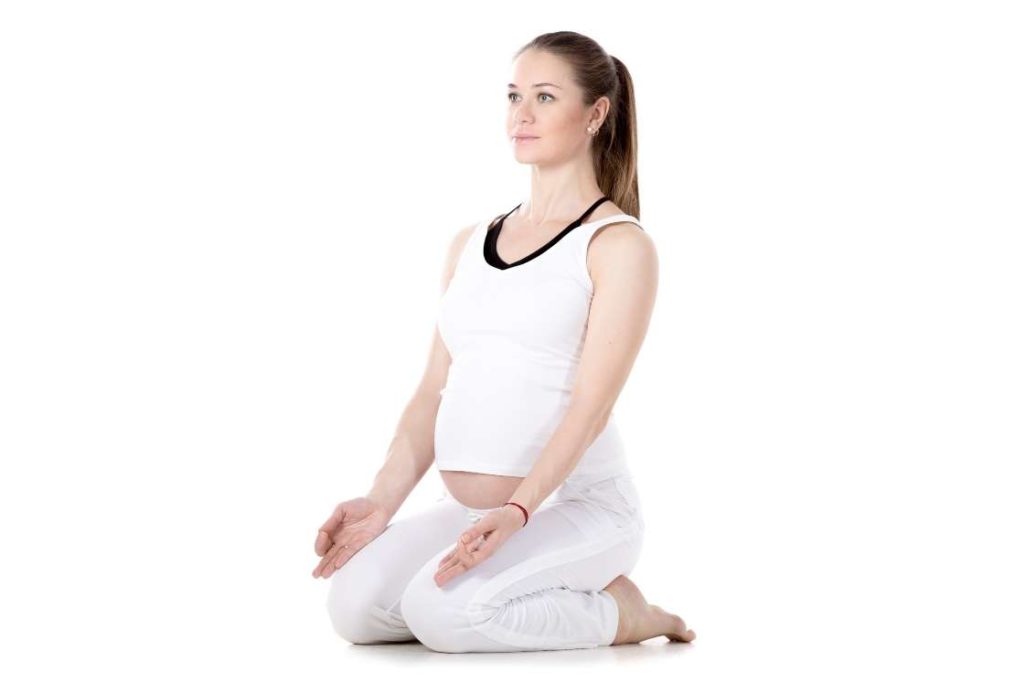
Pranayama exercises give you more control over your breathing during pregnancy which assists in controlling your emotions as well. It is a great way to manage the frequent changes in hormones that often lead to stress and anxiety. It will also help in keeping you calm and foster a connection with your fetus.
Here we have explained some major benefits of pranayama for pregnancy:
1. Improves breathing capacity and oxygen flow
Due to the alteration in the capacity of the abdominal cavity and the constrained movement of the diaphragm, shortness of breath is frequently experienced during pregnancy. By increasing breathing capacity, pranayama helps the lungs function more effectively.
The oxygen levels rise when you breathe deeply and fully, allowing for the aerobic metabolism required for the body cells to be nourished and cleansed. As a result, every organ in both you and your baby’s body get more oxygen and energy, further enhancing overall wellness
The diaphragm’s improved movement by pranayama practice helps with digestion, which is essential for the development of the fetus and the absorption of nutrients.
Also Read: Pranayama breathing exercises for strong lungs
2. Keeps you calm and peaceful
Deep breathing slows down the heartbeat, telling the brain to switch on the rest-and-digest mode. This in turn soothes the nervous system, which promotes a more tranquil and relaxed frame of mind.
A 2013 study published its finding on the effectiveness of yoga practices stating that pranayama practice, among others, was successful in curbing anxiety, depression, and pregnancy-related uncomfortable experiences.
The body can only unwind and sleep when the mind is at peace. It assists in overcoming fatigue and regaining energy making your life more balanced on both the emotional and mental levels.
A peaceful state of mind can lessen postpartum difficulties for the pregnant child, and enhance obstetric and developmental outcomes. A study published in 2018 concluded that even if pranayama is practiced for 6 weeks, it can significantly decrease cortisol levels (stress hormone) and blood pressure.
Pranayama practice may reduce stress-induced dangers, such as hypertension, intrauterine growth restriction, preterm birth, placental abruption, low birth weight, and stillbirth.
Also Read: 4 Best Pranayama Exercises to Reduce High Blood Pressure
3. Assist in forging a connection with your baby
A connection between you and your unborn child can be forged through pranayama. With each breath you take during pranayama, your mind and emotions are calmed and cleared. By making space, you may engage with your mother instinct and experience what is going on in your body, which will guide you in the right direction.
Some other benefits of pranayama during pregnancy are:
- Aid in preparing for childbirth
- Regulates hormonal fluctuations
- Overcomes emotional and mental barriers
- Reduces the risk of cardiovascular illness by controlling blood pressure
- Encourages a clear and attentive mind, which lessens mood fluctuations
- Helps to lessen anxiety, tension, depression, and irritability
- Increases mental focus
- Increases energy, stamina, and immunity
4 pranayama pregnancy breathing exercises
As these pranayamas are being practised during pregnancy, you should seek professional consent and advice before proceeding with home practice. It is advisable that you first learn the correct technique from an expert prenatal yoga teacher.
Also Check: Prenatal Yoga Poses, Safety Tips and Benefits
If you’re not used to or starting pranayama for the first time, you should NOT do pranayama during the 1st trimester as there is a high risk of miscarriage during this time. From the second or third trimester, after about 14 weeks, start the pranayama practice by doing it for a minimum of 2-3 minutes.
As with most yoga practices, you should not do pranayama immediately after a meal. The best time to practice yoga and pranayama is about three or four hours after the main meal or a couple of hours after a light meal or snack.
Here are 4 easy and effective pranayama that can be practised during pregnancy.
1. Nadi Shodhana Pranayama (Alternate Nostril Breathing)
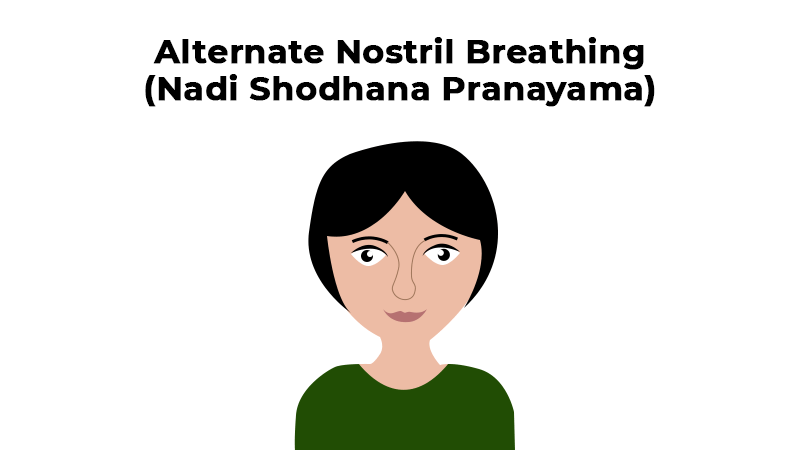
Nadi shodhan pranayama is one of the most effective and easy breathing techniques one can do safely during pregnancy. It reduces negative emotions such as anger, unhappiness, irritation, stress, and anxiety that may arise due to hormonal imbalance during the pregnancy stage. It calms your nervous system which will help you get a peaceful night’s sleep. A calm nervous system also keeps you relaxed in stressful situations.
This pranayama also increases the oxygen supply in the body which results in a better oxygen supply to the baby. As an added benefit, it also aids in detoxification.
By alternating the nostrils, the left and right hemisphere of the brain gets balanced. As a result your hormonal secretion also gets balanced.
Also Read: Anulom Vilom vs. Nadi Shodhan Pranayama
Steps to perform
- Sit in a comfortable pranayama posture keeping your back as straight as possible. Bear in mind, that as your pregnancy progresses your posture may need to be modified to provide maximum comfort and safety. You can use a cushion, folded blanket, or sit on a chair if sitting on the floor is uncomfortable for you.
- Place your left hand on your thigh in Gyan mudra. Bring your right hand in front of your face and make Vishnu mudra.
- Place the thumb on the right nostril and fold the index and middle fingers. The ring and little finger will be placed next to the left nostril. The thumb, ring, and little finger will act as lids to open and close the nostrils.
- Stabilize your breath by breathing normally for a few seconds. Close your left nostril with your ring finger and breathe in from the right nostril.
- Open the left nostril and breathe out completely.
- Keeping the left nostril open, inhale while keeping the right nostril closed by the thumb. Close the left nostril with the ring finger and fully exhale from the right nostril by releasing the thumb.
- Practice at least 2-3 rounds.
Precautions
- Shortness of breath is a warning that you are using your breath above its natural limits. If you start to feel queasy, lightheaded, or dizzy, stop the practice right away.
- The pranayama should not be performed by people who have a mouth, nose, throat, or lung infection of any kind.
2. Ujjayi Pranayama (Victorious or Warriors Breath)
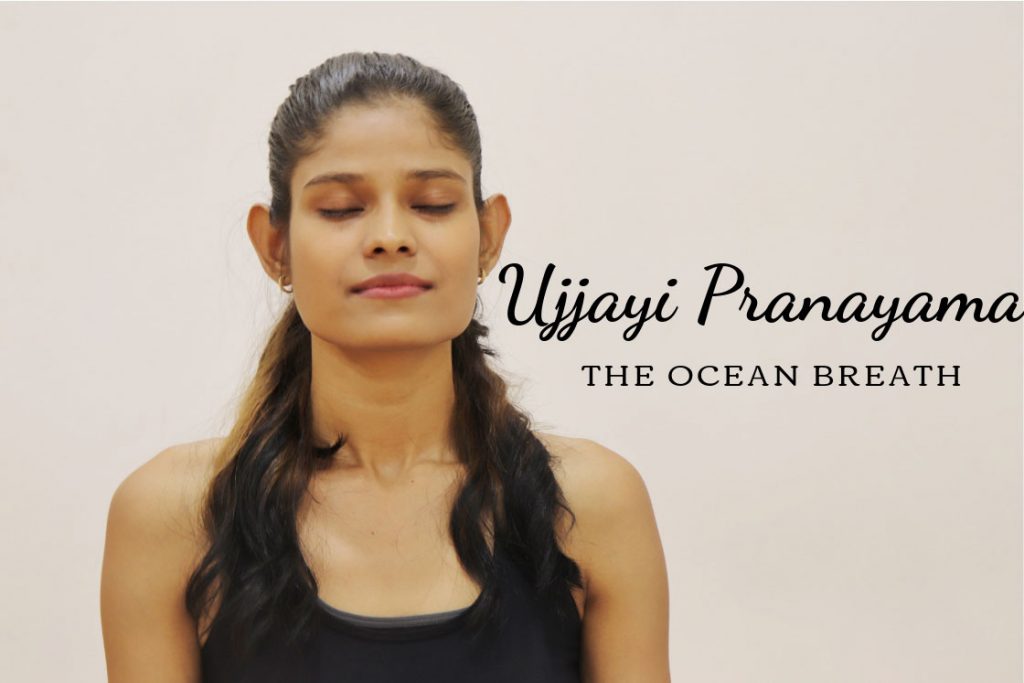
Ujjayi pranayama encourages body cleansing, enhances mental acuity, and allows prana (or vital life force) to flow freely. It boosts energy and self-awareness. You can especially practice this pranayama during winter as it increases internal body heat.
Ujjayi pranayama in prenatal yoga practice helps you cultivate breath awareness which helps in preparation for easy delivery. In this pranayama, you take in air slowly through your nose, filling your lungs entirely, and exhaling completely. As you breathe in and out you will need to create a soft steady ‘hissing’ sound. It will give you the confidence and peace of mind to approach delivery with ease.
Steps to perform
- Sit in a comfortable meditative position with a straight back (as much as you can straighten during pregnancy).
- Inhale through the nose while constricting your throat so that you can feel the air as it goes in.
- Your inhaling should make a rushing noise as if you were snoring.
- Exhaling, keeping your throat constricted.
- Once you are able to set a rhythm, inhale with your nose and exhale with your mouth open. The throat remains constricted at all times.
- Repeat the process for 5-10 rounds and finish by taking deep breaths for 1-2 minutes.
Precautions
- Do not overdo this pranayama as it can pose unnecessary stress on the respiratory and cardiac systems.
- Practice ujjayi in moderation during the summer season as it generates internal heat. Excess heat can be harmful to your pregnancy.
- If you already have complications in your pregnancy, do not practice this pranayama.
- If you have heart disease or migraines, avoid practising unless you get an all-clear from a qualified yoga instructor.
- Avoid Ujjayi breathing if you experience persistent fatigue and lightheadedness.
3. Bhramari Pranayama (Humming Bee Breath)
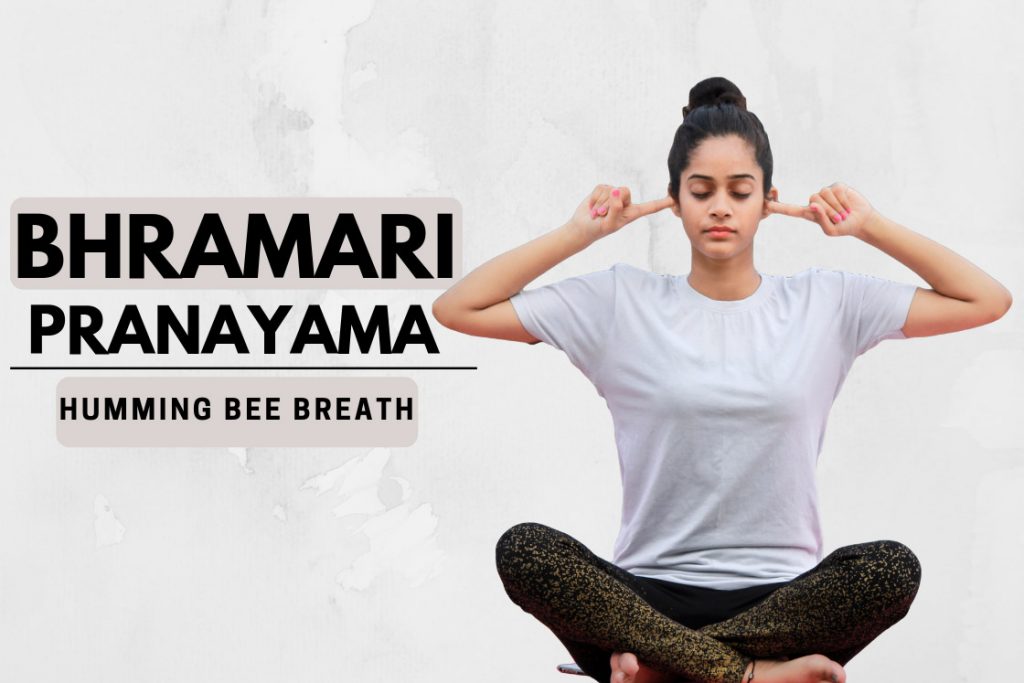
Bhramari pranayama is often advised to calm the mind while keeping it alert. It also regulates blood pressure, which is crucial during pregnancy as severe fluctuations in blood pressure can harm the mother and fetus.
Conditions like pre-eclampsia, a potentially harmful pregnancy condition that is characterized by elevated blood pressure, protein in the urine, limb swelling, and water retention, can also be significantly reduced through this pranayama. A paper published in 2013 successfully noted that bhramari pranayama can be used as a preventive method to avoid the above condition.
The humming sound of this pranayama positively impacts the nervous system. It activates the parasympathetic nervous system which reduced heart rate, stress, and anxiety to calm the mind. This further leads to getting a night of good quality sleep.
Moreover, problems like headaches can also be alleviated by bhramari pranayama.
Steps to perform
- In a quiet place, sit on a cushioned surface in a meditative position of your choice.
- Keep your back comfortably straight and your head aligned with the spine.
- Place your index fingers on the protruding cartilage on the outside of the ear, or tragus, to partially close the ear. The rest of the fingers can be folded inside the palm.
- Inhale through the nose.
- Slightly tuck in your chin (jalandhara bandha), close your ears by pushing the cartilage inwards, and exhale while making a ‘hmmmmm’ sound at the back of your throat.
- Repeat the process 5-7 times.
After finishing the pranayama, take the time for your breath to return to normal while observing the effects.
Precautions
- Perform this pranayama only under the strict guidance of a teacher.
- If you already have high blood pressure, it is better to avoid this pranayama.
- In case of severe ear infections or respiratory problems, do not perform this pranayama.
- The finger shouldn’t be inserted inside the ear. Do not apply excessive pressure on the tragus while closing the ear.
4. Sitali Pranayama (Cooling Breath)
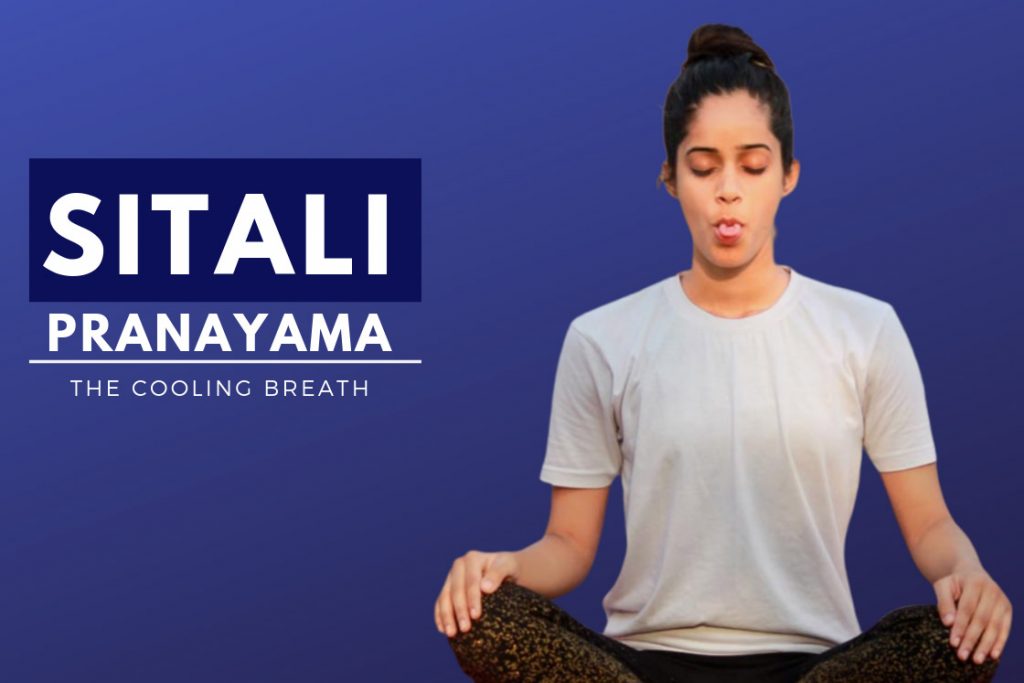
Sitali pranayama has a cooling effect on your body and psyche. This pranayama is extremely effective in reducing acid reflux and heartburn which is a common complaints among pregnant women. During summers, sitali pranayama helps in cooling down the body temperature. Cooling the body temperature is also helpful during a fever.
The cooling breath is crucial in activating the parasympathetic nervous system, thereby reducing stress and anxiety, regulating blood pressure, and encouraging a calm and serene mind and mood.
Steps to perform
- Sit comfortably with your spine straight and your neck in line. Additionally, sitting on a chair is also suitable.
- To steady your breathing, inhale deeply 2-3 times with your mouth open and exhale through your nose.
- Form an ‘O’ shape on your mouth as if you were holding a straw.
- Your tongue should be slightly protruded from your mouth and curled at the sides. It can also remain flat if you are unable to roll it.
- Take a deep breath in as though you were sucking through a straw, letting the cool air pass through your tongue and throat.
- Slowly breathe out through your nose, with your tongue inside and mouth closed, to release the heated air.
- Practice this pranayama for 2-3 minutes.
Precautions
- Sitali Pranayama should not be practiced in the winter or in really cold conditions because it may cause respiratory issues in your lungs.
- Avoid doing it if you have asthma, a cough, a cold, or congestion because it will make your condition worse.
Which pranayama should be avoided during pregnancy?
It is not advisable to do pranayama which involves rigorous breathing and generates heat within the body. Avoid pranayama such as kapalbhati, bhastrika, surya bhedi, etc. as they involve extensive abdominal movements and require you to retain your breath. You might become weak, nauseous, and dizzy from them. This is especially crucial if you have asthma, heart disease, shortness of breath, or any other condition.
Frequently Asked Questions
A. Yoga experts suggest that pregnant ladies can do pranayama for their baby’s and self’s overall well-being. Pranayama practice from the 2nd trimester or the 14th week is considered to be the best time. It is ideally suggested that pregnant women should not practice any form of exercise, be it yoga, pranayama, or even light workout during the 1st trimester.
A. Yes, Pranayama is one of the safest methods to help you in your pregnancy journey. You can start practicing pranayama from the second or third trimester so that by the time you are ready to give birth, you have already learned to manage your emotions, thoughts, and physical changes.
A. You might hear varied opinions on this. However, the general consensus is that Kapalabhati should be avoided during pregnancy. This is because kapalabhati involves extensive and vigorous stomach movements for forceful breaths and also generated internal heat quickly.
A. Breath retention in pranayama, in any form and for any time period, should be explicitly avoided. This will not only make you feel lightheaded but can also restrict the oxygen supply to the fetus. Less oxygen supply can lead to physical and mental underdevelopment of the fetus.




